Our smartphones have become an inseparable part of our lives, connecting us to the world at our fingertips. However, our constant use of electronic devices has given rise to a concerning issue known as “Tech Neck.” This term refers to the strain and discomfort caused by prolonged forward head posture while using technology.
The repetitive stress on our necks and upper backs can result in various issues, including neck pain, shoulder tightness, and tired eyes. Fortunately, with some simple adjustments to our habits and the assistance of physiotherapy, we can effectively combat Tech Neck and improve our overall posture and well-being.
Tech Neck occurs due to increased force on the neck as we lean forward to look at our devices. In more upright postures, the force is around 4-6 kg, but it dramatically rises to 22 kg when the neck is bent forward at a 45-degree angle.
The added weight on the neck dramatically increases when flexing forward at varying degrees:
15° increases weight on the neck by 12 kg.
30° increases weight on the neck by 18 kg.
45° increases weight on the neck by 22 kg.
60° increases weight on the neck by 27 kg.
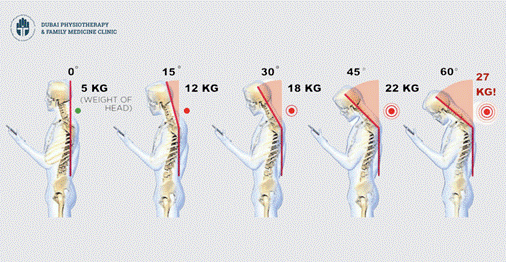
👉🏼 The consequences? Neck discomfort, neck pain, stiffness, and headaches, which may worsen over time.
To prevent Tech Neck and improve your posture, consider these simple adjustments:
- Raise your phone up to eye level, rather than looking down at your phone.
- Keep your chin gently tucked in while using your smartphone to prevent the common “Poking Chin” posture that causes neck aches.
- Keep your shoulders relaxed and gently pull them down and back towards your shoulder blades while using your phone.
According to recent data, the average person spends 3 hours and 15 minutes on their phone each day.
If you’re experiencing neck pain, it’s important to seek medical attention. Our physical therapists can provide the necessary treatments to help reduce and eliminate pain.

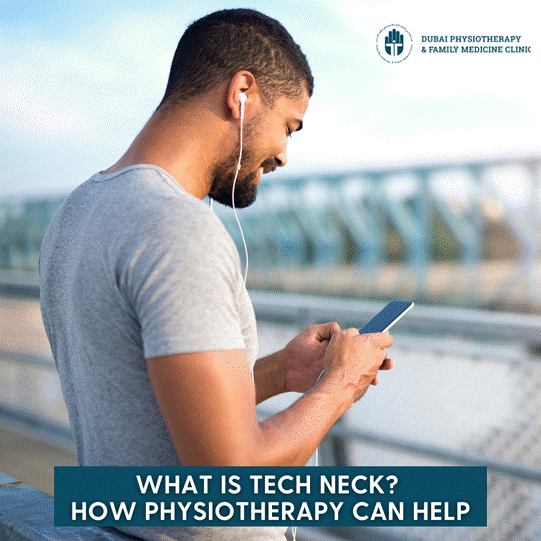
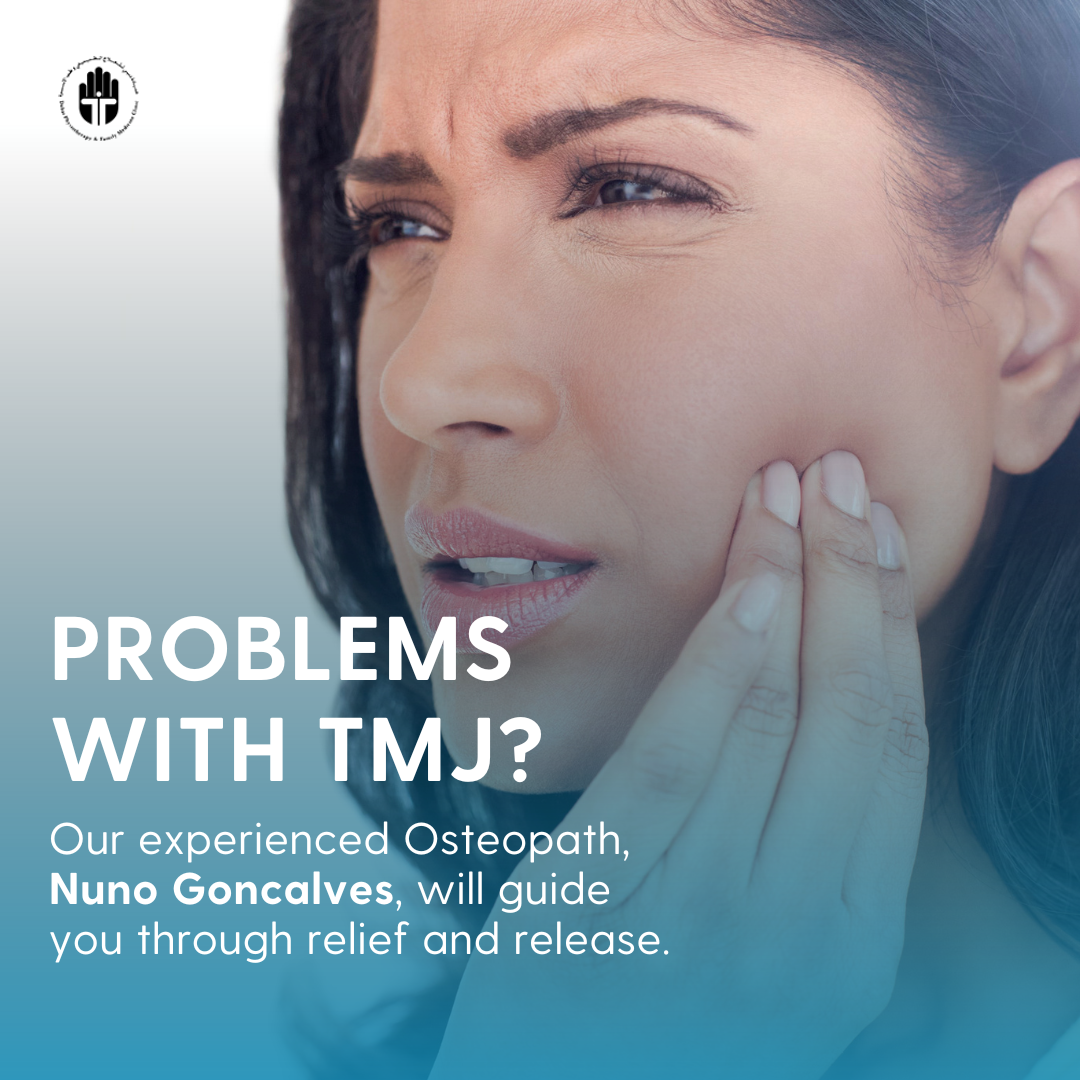
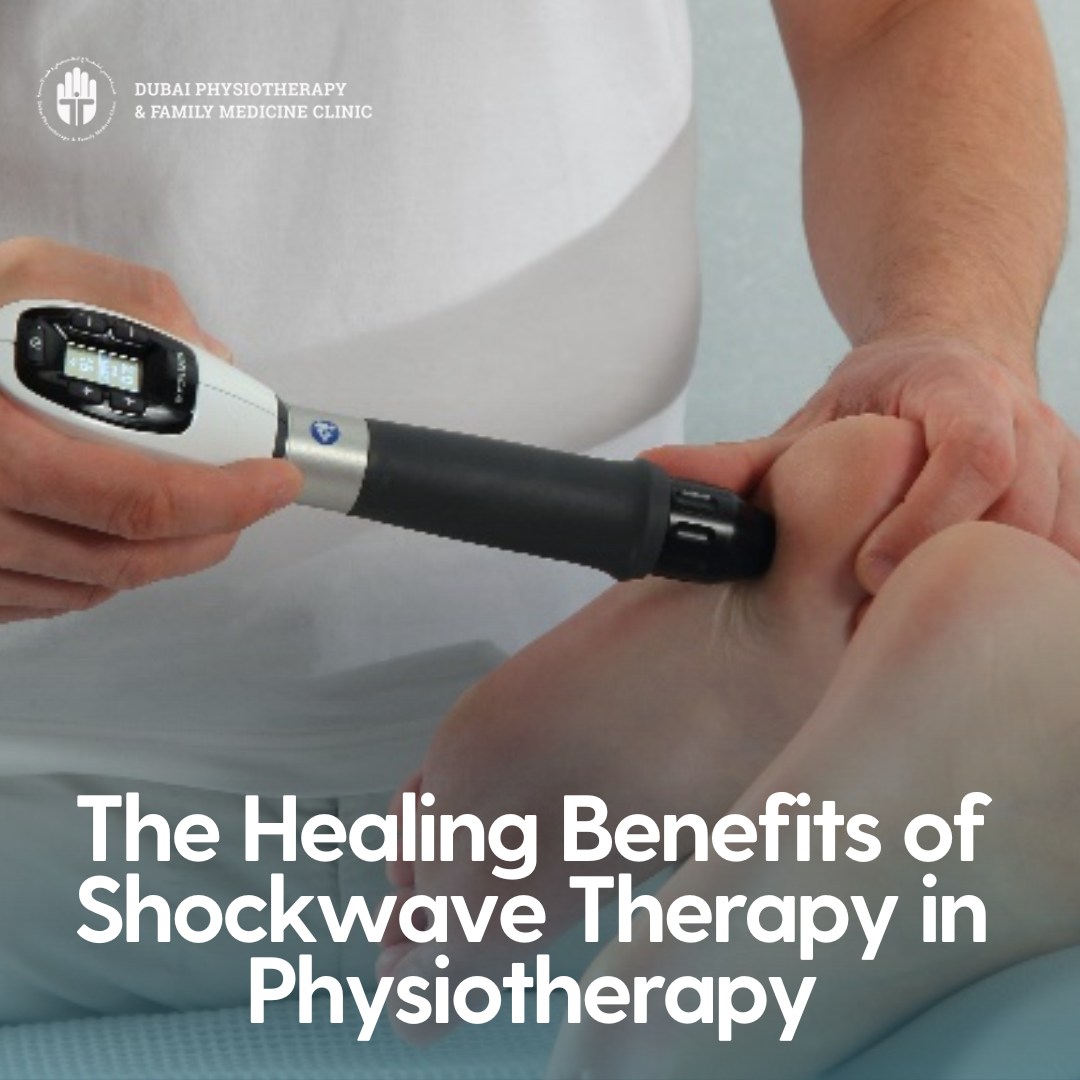
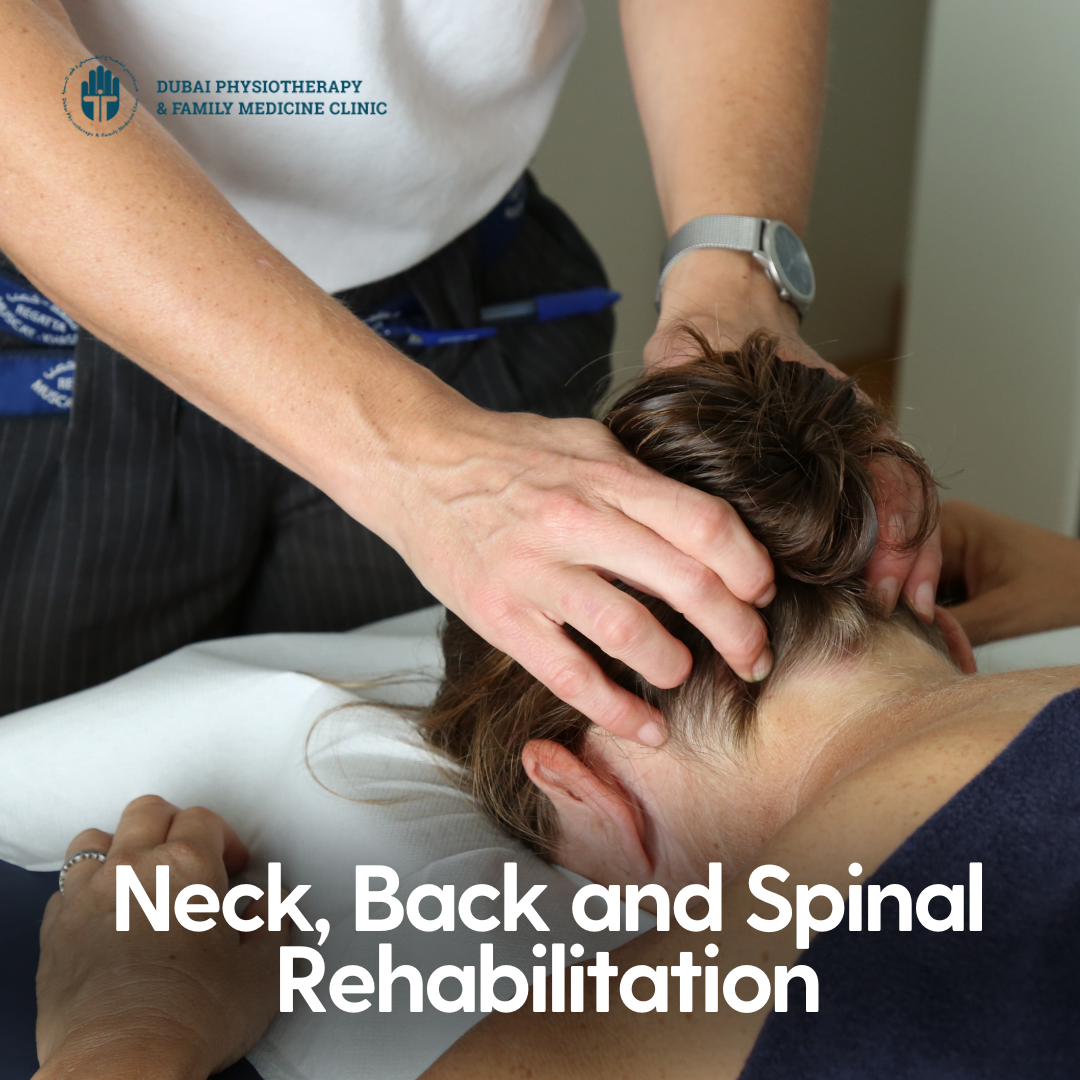
 Dubai Physiotherapy and Family Medicine Clinic was established in 1992 to provide a fully comprehensive Family Medicine and Physiotherapy Service to the Community.
Dubai Physiotherapy and Family Medicine Clinic was established in 1992 to provide a fully comprehensive Family Medicine and Physiotherapy Service to the Community.